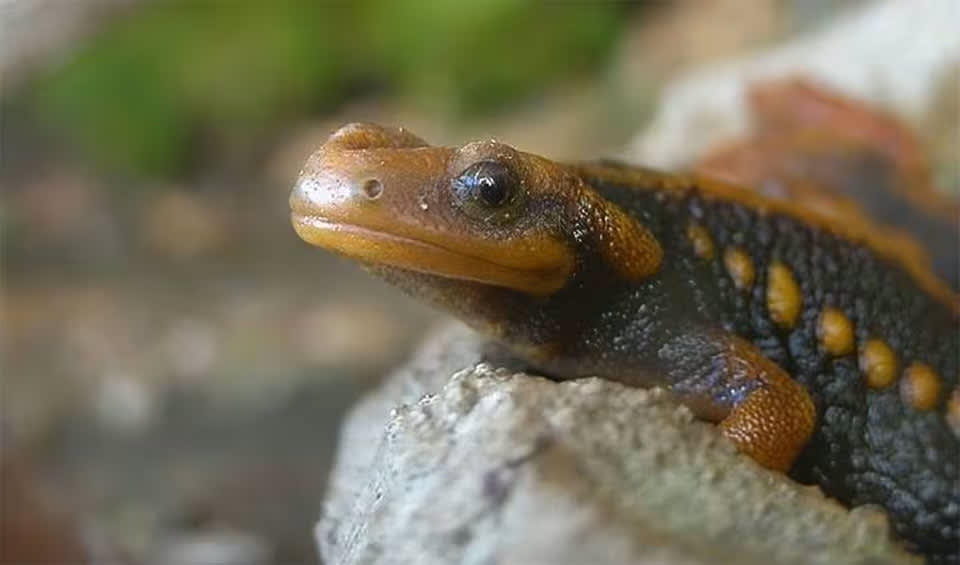Commonly known as the Crocodile Newt or Himalayan Newt, it is a distinctive species of salamander that boasts an impressive and somewhat prehistoric appearance, which gives it its common name. These newts typically exhibit a dark brown or black base color, but what makes them particularly eye-catching is the vivid orange coloring that adorns their rugged, oval head and their tail and limbs, creating a striking contrast that’s hard to miss in their natural habitat.
This species possesses a unique physical characteristic that sets it apart from other amphibians: its skin has a rough, bumpy texture reminiscent of a crocodile’s, which is where the name “Crocodile Newt” originates. The tail of these newts is a distinctive feature, often displaying a lighter color than the rest of the body, which may serve as a signaling mechanism during mating or as a means of distracting predators.
In terms of sexual dimorphism, which is the difference in size or appearance between the sexes of an animal, females are typically larger than males. This size difference can be essential during the breeding season, as the larger females can carry more eggs.
The Crocodile Newt’s natural habitat is as remarkable as its appearance. These newts are usually found in mountainous woodlands at high altitudes, near lakes, pools, and streams. They strongly prefer cool, clean water, which is essential for their reproduction and development. Tylototriton verrucosus breeds in these aquatic environments, laying eggs that will develop into aquatic larvae before undergoing metamorphosis into terrestrial juveniles.
Unfortunately, the Crocodile Newt faces significant threats due to human activities. One of the most pressing challenges is their over-collection from the wild, driven by demand in the illegal pet trade. This over-collection reduces the wild populations and often disrupts the delicate balance of their ecosystems. Moreover, habitat destruction and pollution are additional factors that jeopardize their survival.
Distribution
 China
China Myanmar
MyanmarAnything we've missed?
Help us improve this page by suggesting edits. Glory never dies!
Suggest an editGet to know me
Terrestrial / Aquatic
Altricial / Precocial
Polygamous / Monogamous
Dimorphic (size) / Monomorphic
Active: Diurnal / Nocturnal
Social behavior: Solitary / Pack / Herd
Diet: Carnivore / Herbivore / Omnivore / Piscivorous / Insectivore
Migratory: Yes / No
Domesticated: Yes / No
Dangerous: Yes / No




